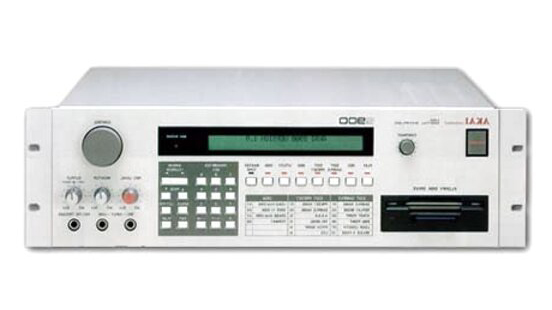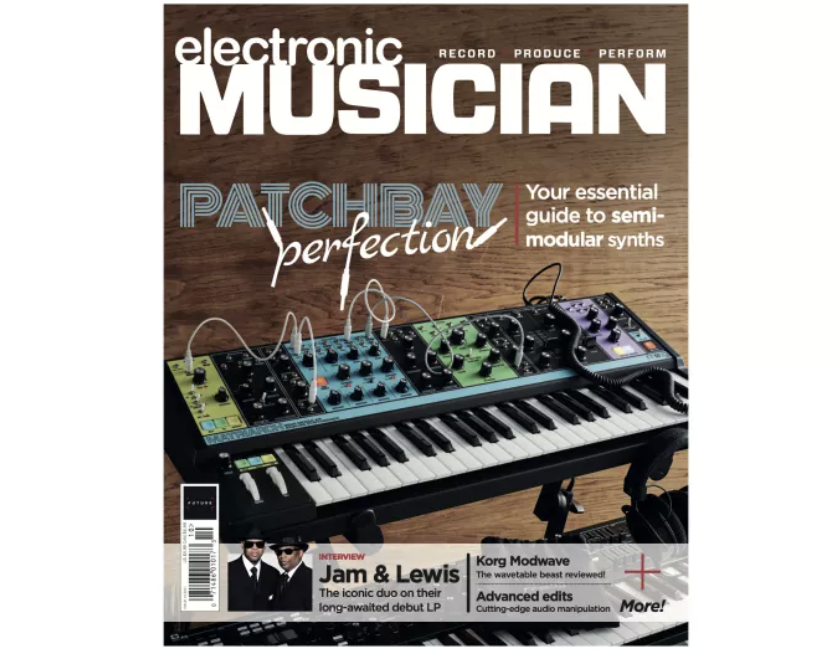Akai S950 review
A look at the classic sampler

Produced: 1988-93
Made in: Japan
Designed by: Dave Cockerell, H. Takemura
Number produced: 15,000
System: 12-bit linear sampling
Price new: $2,500
Today's prices:
Like new $500
Like, it's okay for its age $425
Like hell $300
When the S950 was introduced in 1988, all eyes were focused on Akai's more newsworthy sampler, the S1000. The Akai S950, essentially an upgraded version of the popular S900, hardly rated mention in the popular press.
It wasn't long, however, before many sampler-savvy musicians realized that the Akai S950 was quite well suited for a variety of musical applications. Although the S950 offers the same meagre 12-bit processing and 8-note polyphony as the S900, it boasts a superior 48 kHz sampling rate and a maximum 2.25 MB of RAM, with 750 KB standard. In addition, items that were options on the Akai S900, such as crossfade looping and pretrigger recording, are standard on the S950. The S950 provides 99 sample locations as opposed to only 32 on the S900.
Physically, an Akai S950 is almost indistinguishable from an S900. It has the same green LCD, the same eight Page buttons, the same cursor, and the same five knobs. Although the disk drive looks identical to the Akai S900's, the S950 accepts both double-density (DD) and high-density (HD) floppy disks. You can load disks while playing, too — a feat the S900 is not inclined to perform. Also unlike its predecessor, the Akai S950 provides double-speed MIDI communication for transferring data to a sample-editing program on an external computer.
The Akai S950 operates much like an S900 does: the sample record pages take you through setup procedures one step at a time. Although the lofty 48 kHz rate offers extra sparkle, it also reduces your maximum sample time at full bandwidth. Using the S950's pretrigger recording, you can record razor-sharp attacks. If you really want to get serious, you can process individual hits from the S950's eight outputs.
The S950 was the first Akai sampler to implement time-stretching, enabling you to alter sample length without altering the pitch. Considering the S950's continued popularity as a drum-loop sampler, that capability proved crucial to its success. If you stray too far from the original sample length, recordings begin to sound a little metallic and artificial, which might be the result you're aiming for.
The Akai S950 has stood the test of time well; many people have continued to use theirs through the 1990s and beyond. For Steve Hackett's album There Are Many Sides to the Night (Caroline Records, 1994), I spliced a scratchy old solo violin sample from the S950 onto the attack of a lush strings patch from the Korg Wavestation. Perhaps more resourcefully, Norman Cook (aka Fatboy Slim) uses a transposed S950 Tone Program mixed in with an Oberheim Matrix-1000 for many of his sub-bass sounds. S950 drum loops, grainy and grungy in all their 12-bit glory are particularly hip in hip-hop.
A vast range of Akai and third-party sounds are available for the S950. Impressively, the S950 is downwardly compatible with S900 disks and upwardly compatible with S1000 disks. Although the S950 converts the S1000's 16-bit data to 12 bits and stereo to mono, most samples transfer extremely well.
The S950 has a few known problems. If the instrument is handled roughly, the EXM006 expansion chips are somewhat prone to falling out; luckily, it's easy to remove the bottom plate and press the errant chips back into place. The disk drives have been known to wig out eventually, and replacing them costs as much as $200.
Here's a tip worth mentioning: if an S950 disk appears damaged and you fear that your sample data is irretrievably lost, try loading the samples or programs individually instead of powering up with the disk in place. That trick will get you out of jail half of the time.
The S950 was never a fancy machine with advanced facilities such as onboard effects, stereo sampling, resonant multimode filters, and the like, but it's a workhorse. In the S950's prime, SCSI was available as an option. Numerous software programs can transfer samples to and from your Macintosh or PC for editing.
The S950 offers a particular colouration and feel, and it's quite capable of filling a niche in the 21st-century studio. The Web is dotted with S950 info, and you can even find some resources at Akai's site (www.akaipro.com), including a searchable PDF version of the S950 manual. In addition, Masterbits (www.masterbits.com) offers a 750 KB Memory Expansion Card from the German company MU-TEC.
The quoted prices reflect typical street prices you must expect to pay in U.S. dollars. The buy-in on vintage instruments, as with vintage cars, is just the beginning, though. Most of the original manufacturers are long gone, so maintenance and repairs are expensive.
Get the MusicRadar Newsletter
Want all the hottest music and gear news, reviews, deals, features and more, direct to your inbox? Sign up here.
Electronic Musician magazine is the ultimate resource for musicians who want to make better music, in the studio or onstage. In each and every issue it surveys all aspects of music production - performance, recording, and technology, from studio to stage and offers product news and reviews on the latest equipment and services. Plus, get in-depth tips & techniques, gear reviews, and insights from today’s top artists!
